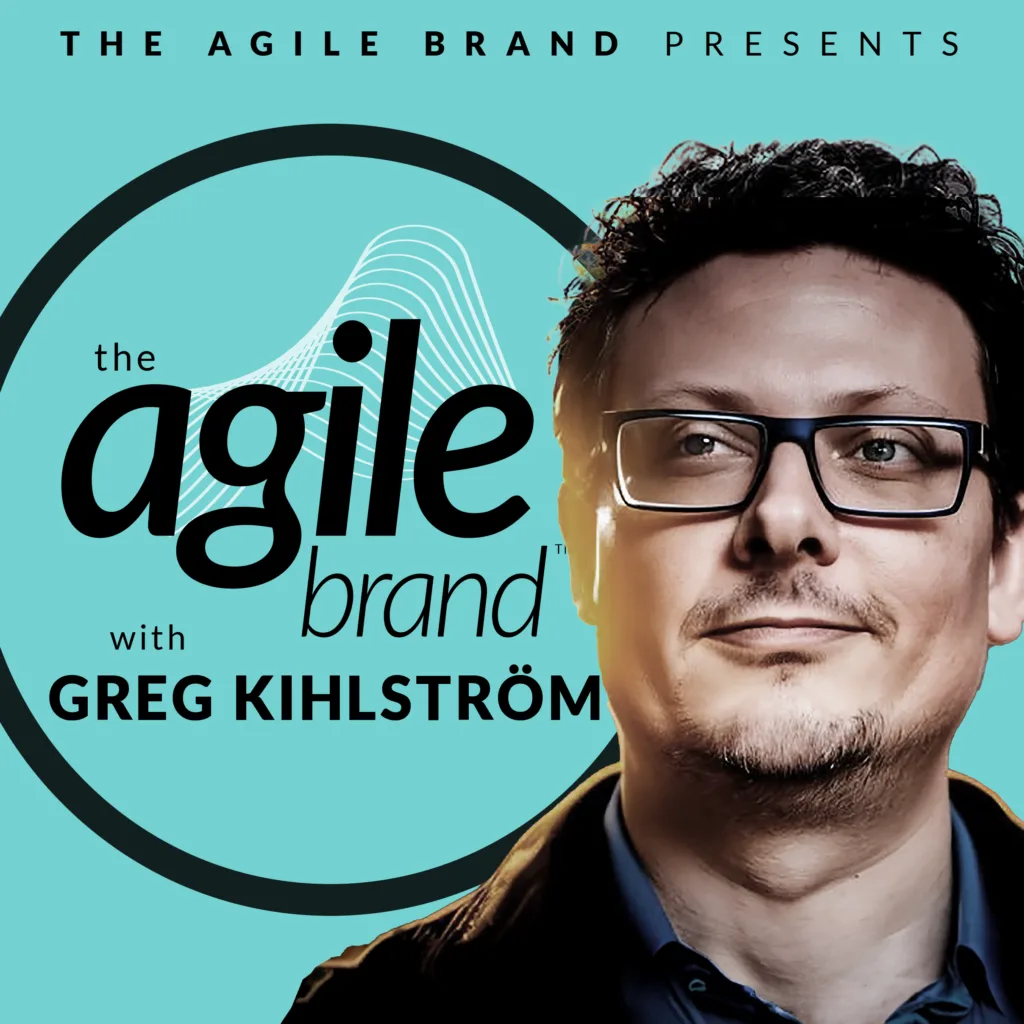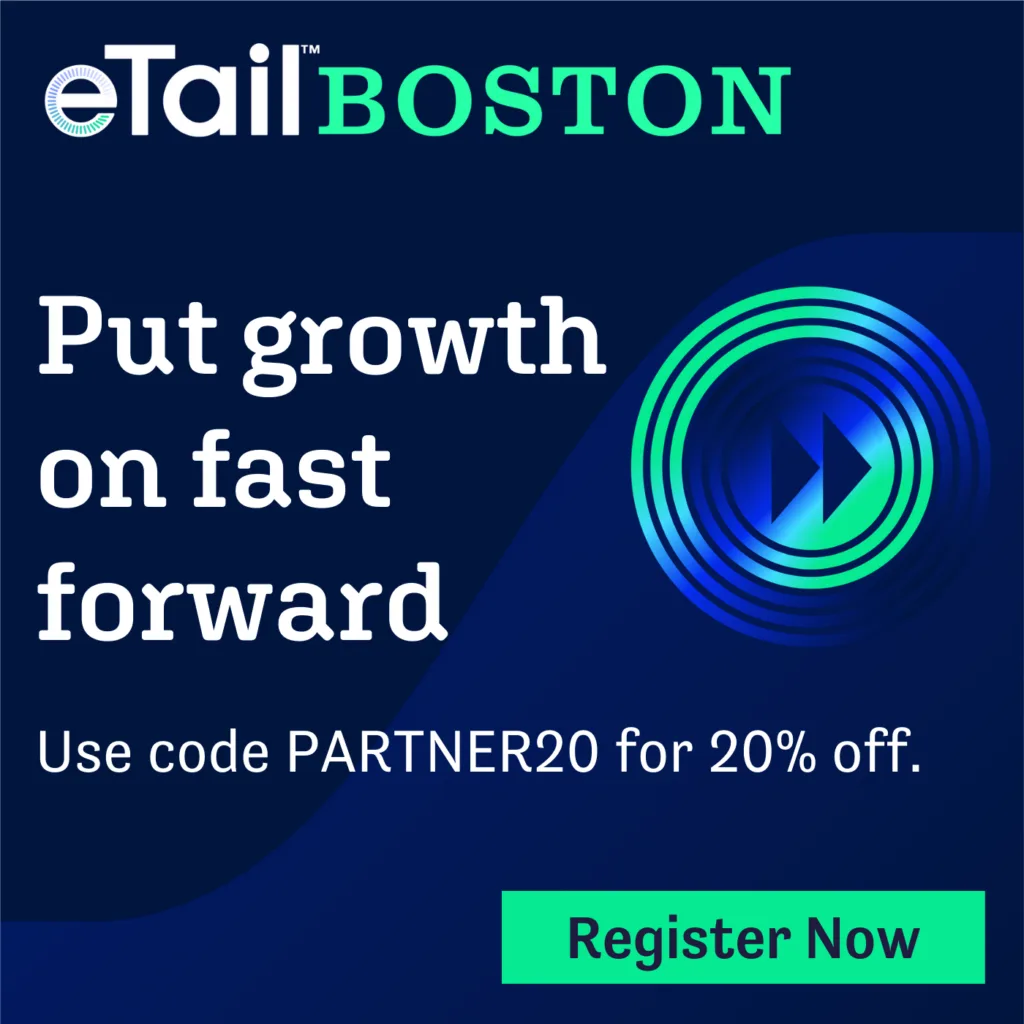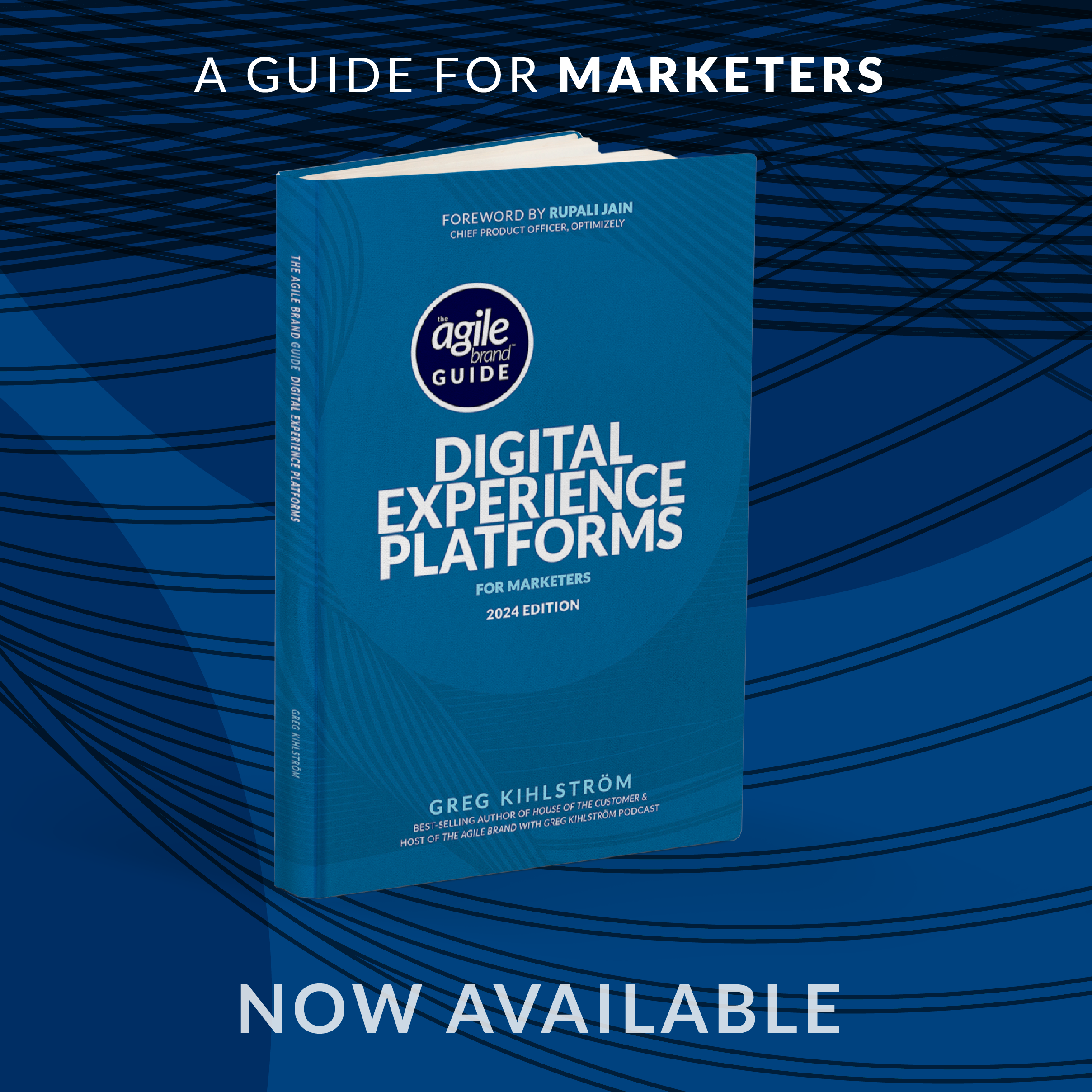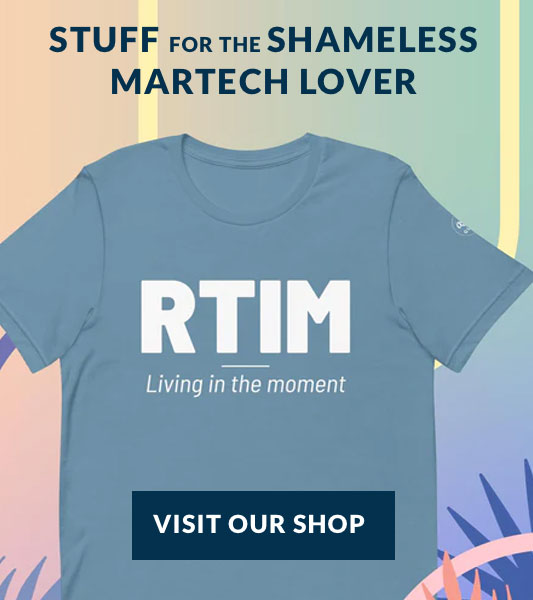What if your most profitable campaign window isn’t Black Friday or Cyber Monday… but after the holidays, when everyone else is quiet?
While most marketers are winding down, savvy brands are doubling down—tapping into the “Q5” period between Christmas and early January, when ad prices drop, engagement spikes, and consumers are laser-focused on their New Year goals.
Today we’re digging into how AI is revolutionizing brand partnerships, why micro-influencers might be your secret Q5 weapon, and what smart marketers are doing to turn a slow season into a sales surge.
To discuss this, I’d like to welcome Xavier de Baillenx, CEO of Ramdam, an AI-powered creator platform working with over 50,000 influencers globally.
About Xavier de Baillenx
Xavier de Baillenx is a serial entrepreneur and the Co-founder and CEO of Ramdam, an AI-powered platform that streamlines user-generated content (UGC) production for brands, optimizing every step of the creative process. Launched in 2023 by the same team known for their previous venture, Pretty Fun Therapy, acquired by Match Group (the company behind Tinder and Hinge), Ramdam empowers advertisers to connect with the right creators, delivering high-performing ads that elevate social media campaigns and eliminate the guesswork of the creative lottery. The platform quickly gained recognition, with brands like Allianz, Voodoo, and Colgate-Palmolive leveraging Ramdam to achieve up to an 80% improvement in performance compared to traditional UGC marketplaces. Ramdam’s rapid success also led to securing $3.15 million in funding in October 2024 to accelerate its global expansion.
Xavier’s entrepreneurial journey began in 2013 when he co-founded Pretty Fun Therapy with his current team, a venture that was acquired by Match Group, the company behind Tinder and Hinge, in 2016. At Match Group, he led AI innovation, pioneering some of the industry’s first consumer brand chatbots that engaged millions of users. With a background in digital development from his time at Universal Music, Xavier brings extensive experience in combining technology and creativity. He holds an engineering degree from CentraleSupélec.
Resources
Ramdam: https://www.ramd.am/
The Agile Brand podcast is brought to you by TEKsystems. Learn more here: https://www.teksystems.com/versionnextnow
Catch the future of e-commerce at eTail Boston, August 11-14, 2025. Register now: https://bit.ly/etailboston and use code PARTNER20 for 20% off for retailers and brands
Don’t Miss MAICON 2025, October 14-16 in Cleveland – the event bringing together the brights minds and leading voices in AI. Use Code AGILE150 for $150 off registration. Go here to register: https://bit.ly/agile150
Connect with Greg on LinkedIn: https://www.linkedin.com/in/gregkihlstrom
Don’t miss a thing: get the latest episodes, sign up for our newsletter and more: https://www.theagilebrand.show
Check out The Agile Brand Guide website with articles, insights, and Martechipedia, the wiki for marketing technology: https://www.agilebrandguide.com
The Agile Brand is produced by Missing Link—a Latina-owned strategy-driven, creatively fueled production co-op. From ideation to creation, they craft human connections through intelligent, engaging and informative content. https://www.missinglink.company
Transcript
Greg Kihlstrom (01:08.034)
What if your most profitable campaign window isn’t Black Friday or Cyber Monday, but after the holidays when everyone else is quiet? While most marketers are winding down, savvy brands are doubling down, tapping into the Q5 period between Christmas and early January when ad prices drop, engagement spikes, and consumers are laser focused on their New Year goals. Today, we’re digging into how AI is revolutionizing brand partnerships, why micro influencers might be your secret Q5 weapon,
and what smart marketers are doing to turn a slow season into a sales surge. To discuss this, I’d like to welcome Xavier de Bellianx CEO of Ramdam an AI-powered creator platform working with over 50,000 influencers globally. Xavier, welcome to the show.
Yeah, thank you, Greg. Happy to be here.
Yeah, looking forward to talking about this with you before we dive into the topic though. Why don’t you start by telling us a little bit about your background and your current role at Ram down?
Sure. So I’m Xavier, the CEO and co-founder of Ramdam. Ramdam is an AI-powered platform that helps any brand to scale their advertising with authentic, high-performing creator content, especially through micro-influencers. So we work with over 50,000 creators worldwide. And what makes our model completely unique is AI handles everything, matching with the right creators, generating the brief, reviewing the content. And clients get thousands, even hundreds of creator-made ads delivered seamlessly without managing creators themselves.
Xavier de Ballienx (02:35.33)
Before Ramdam, I actually am an engineer, but I worked in the music industry at Universal and then moved into tech. me and my co-founder, our previous startup was acquired by the Match Group, global leader in online dating services. And we launched Ramdam two and half years ago and we are scaling fast. We recently closed the seed round to keep scaling.
Nice, nice. That’s great. Well, yeah. So let’s let’s dive in here. And first, I want to talk about maybe some some audience members out there aren’t familiar with the term Q5, you know, as it would make sense that there’s only four quarters in the year. But, know, this this Q5 concept is pretty interesting. I want to talk about this. So most marketers think of the holidays is kind of wrapping up in December. But you’re saying the real opportunity starts after Christmas. So, you know, what is Q5 and why should marketers care so much?
Absolutely. So Q5 starts right after Christmas, like December 26, and it stretches into like early to mid January. It’s actually an overlooked but incredibly powerful window for marketers for two reasons. Number one reason is ad costs drop dramatically. You know, during Q4, like you have all the advertisers competing, CPMs are sky high. And starting December 26, most advertisers, they just pause the campaign. So it’s programmed, they pause the campaigns, and it means CPM
suddenly collapse and you can actually acquire a user for half the price of just a few days earlier. So that’s great for that. And the other reason is consumer intent is very high. So after Christmas, actually you’re pretty done with gift shopping, right? So you’ll start focusing on self-improvement like fitness, finance, wellness, dating, education, new goals. So if your brand speaks to these ambitions, Q5 is definitely your moment. yeah, it’s a very interesting period where
Instead of winding down all the smart marketers lean in, actually.
Greg Kihlstrom (04:28.982)
Yeah, yeah. so, you know, it’s I know this this shows airing, you know, mid midsummer here. But, you know, as we all know, you know, marketers are planning for holiday shopping from, know, from the start of the year on. So, you know, planning certainly for Q5. Certainly it’s it’s it’s not too early to do that as well. Absolutely.
One of the things that, as you mentioned, that Ramdam does is working with influencers and you’ve worked with over 50,000 of them. What have you seen in terms of ROI when it comes to micro influencers, especially in this Q5 period?
Yeah. So yeah, Q5, as I told you, is all about relevance, trust. So it’s period when people are focused on themselves, their goal, their new habits. so authenticity becomes even more important. So that’s exactly where micro influencers shine, actually. So at random, we actually discovered two things, because we are producing thousands and thousands of videos every month. To drive performance on TikTok or Meta on social media ads, need volume, number one, and authenticity, number two. So if we start with volume,
With the TikTokization of social media, you never know which creative is going to be successful. Let me give you an example. We have this Canadian TikToker whose video reached 50 million views in the US, helping an app reaching top 10 in 15 countries. And so we try to replicate with the same format, same hook, same music, same creator. It completely failed. So success isn’t about repeating formulas. Success is about statistics. You have to play with the odds. And so to secure top-performing ads, you need volume. That’s number one.
And then comes authenticity. So everyone now on the social media, they go from one content to another, and they have developed what we call a scroll immunity. So what does that mean? It means that whenever a content looks a little bit like an ad, a little bit too scripted or over-polished, they instantly skipped. They skip right away. And micro-influencers can break that pattern, actually. They feel relatable. They feel genuine. And they speak to real niches, actually. I don’t know if you know that statistic,
Xavier de Ballienx (06:32.43)
micro-influencers drive 60 % higher engagement than big influencers or brand-new content. Not because of the massive reach, but because people trust them and because their content doesn’t really feel like an ad. So in one word, authenticity. And that’s exactly what performed best during the whole year and especially during Q5.
Yeah, yeah. So I want to talk then about, you know, so we talk about authenticity. Now let’s talk about AI and AI driven. so, you know, some listening may be curious how, you know, AI can drive greater, greater authenticity as well. But, you know, let’s so let’s talk a little bit about that. You know, how is AI changing the way that brands approach influencer partnerships and what makes these new strategies more effective than traditional campaign planning?
Yeah, so it changes everything. So I just told you that to be successful, you need volume and authenticity, right? Yeah. There is absolutely no way to scale creator campaigns and to get this authenticity at scale without AI. Doing it manually is impossible. You’ve got millions of micro-influencers out there, right? Find the right ones who align with your brand, with your goals, with your budget, with your timing also is nearly impossible without AI.
So this is what we do at random. example, we will analyze each creator’s profile, their videos, their hashtags. We will make a score alignment with a brief, and we’ll send the offer only to creators that are the most relevant for the brand. And obviously, you cannot do that with sending email. You need to have the AI that do that automatically. But then comes also the brief generation. So when you do a brief, you need to actually align your value as a brand with current viral dynamics. What trends?
what are the next hooks that are working okay. It changes every day and only the AI can actually monitor everything globally. Human cannot do that. Also when you have to review the contents, AI now can review frame by frame all the video and make sure it’s aligned with the brief in tone, in compliance, in messaging. And in many cases, let me tell you, it’s much more consistent than human reviewers. So for all these reasons, AI can actually…
Xavier de Ballienx (08:49.166)
help you sort these Q &Q problem, quality and quantity, with as a result, authenticity at scale, meaning lower CPM, lower acquisition costs and better ROI every time. So AI really changes everything.
Yeah, I mean, it definitely seems I mean, to your point about, you know, you can’t have absolute certainty that one specific thing is going to be successful. So you’ve got to have scale. And, you know, I can imagine, you know, even if you’re a large brand, doing all of this at scale can be difficult and, you know, finding matching, researching all that kind of stuff, let alone if you’re a smaller, you know, even a midsize organization, you probably just you don’t have the team to do that at scale. And yet you’ve got to
have volume to figure out what works, right?
Exactly, exactly.
Greg Kihlstrom (09:40.504)
So another thing, another aspect of this is the concept of mobile first campaigns and Q5, as you mentioned, there’s a lot of, there’s the New Year’s resolutions. There’s a lot of that, that’s kind of introspection or self goals and things like that. As consumers lean into something like New Year’s resolutions, what are the most successful tactics that you’ve seen for mobile engagement and how can brands authentically connect with these intentions?
Yeah, let me share two tactics, actually, if you don’t mind. Yeah. The first one would be like, I call it trend hijacking. I mean, you’re probably familiar on TikTok or even Meta, what we call trends, which would be like memes, popular songs, challenges, that kind of stuff that lasts for a few weeks are super popular. And actually, we found out that letting creators plug your brand into the trend, like trying to catch the essence of your value proposition in sometimes five
five seconds max. Actually, it’s fast, cheap, and it often outperforms scripted content, especially when it’s done at scale. So you should definitely find the right trends that match with your brand and ask for a lot of creators to plug your brain into that trend. A super successful tactic. Another tactic would be the slideshow or carousel. Not everything has to be a video. Actually, creators can make native photo slideshow
TikTok, for example, but also on Meta everywhere. And it actually also can outperform video in a lot of formats on mobile, especially for more emotional or instructional content. So you should definitely try trainerjacking slideshow. But the bottom line is basically the recipe for success is diversity. Content, diversity of creators, diversity of message, diversity of formats. If you can scale that diversity, you win. For sure.
Yeah. So talking more about activating creators and, know, as you mentioned, a lot of a lot of brands are working with multiple micro influencers. What advice would you give to marketers looking to activate creative creators during Q5? You know, what are some of the maybe mistakes to avoid? And, you know, what is a great Q5 creator brief look like?
Xavier de Ballienx (11:58.798)
So the biggest mistake I would say would be choosing creators by follower count. Follower count because that metric, the number of followers, doesn’t mean much anymore. We call that the TikTok-ization of social media with MetaReels, YouTube Shorts, where all those platforms are becoming entertainment platforms, actually, not so much social media. And what happens is views come from quality, not anymore from audience size.
So for example, I’ve seen creators with 5 million followers on TikTok get 200 views and vice versa. So do not look really at the follower count. Look at the content and make sure that the content match with your needs, with your values. That’s much more important than the follower count. Another mistake that a lot of advertisers do when they start is testing too few creators. So they spend time trying to find the perfect creators.
and just testing the waters with maybe four five creative content, it almost never works. It’s like gambling, right? You need at least 20 creatives, at least 20 creatives for a campaign to find a top performer, ideally between 50 and 80. And so you talk about brief and you’re absolutely right. Brief is a cornerstone of successful campaign. Good brief, good creatives, bad brief, bad creatives. It’s as simple as that. And when it comes to briefs,
My advice would be first, be clear about the dos and don’ts. Like if you want the creators to show their face, or if you don’t want them, for example, to mention competitors, be super clear about that. On the other hand, creators, especially younger creators, they don’t like to read anymore. They like video, but they don’t like to read anymore. So keep it concise. Keep it brief because creators won’t read essays. And last, but definitely not the list.
leave room for creativity. Try to ditch the script because some of the best performing might come up with something great that you hadn’t thought of and that could actually lead to a top performing ad. At Rondam actually we iterated our briefing system for years and years and years to make sure we find the right balance and once you find the bad balance you considerably increase your chances of success.
Greg Kihlstrom (14:19.214)
Yeah, I mean, I would imagine with to the point about the script, if it’s highly scripted, that also may impact authenticity, right? So, yeah. Yeah. So, you know, as we’ve mentioned a couple of times here, you know, you’ve worked with a lot of campaigns, worked with over 50,000 creators out there working with so many campaigns globally. I imagine you’ve uncovered some, you know, maybe surprising insights. You know, what’s something that might surprise our listeners about
Absolutely.
Greg Kihlstrom (14:48.982)
Influencer marketing, mobile engagement, or Q5, all of the above.
Yeah, actually I have one. What actually really surprised us. So to give you a bit of context, most of our clients, they have the same pattern. They start in the US with US creators and then eventually they would expand globally if the product is a huge success. So when you need to expand globally in Europe, in Latin America, wherever, the assumption would be, okay, I need new localized creatives for each region. So I would need Brazilian creators for Brazil, French creator for French, et et cetera.
Actually, we found out that top performing from US creators often work globally, even in non-English speaking countries, which was quite surprising. I it’s understandable. audience or meta audience or YouTube audience are used to US content. So as long as the message is clear, it can perform actually incredibly well across borders. as a marketer, don’t be afraid to recycle high performing US ads internationally. I mean, on social media, you wouldn’t have that on TV, obviously. But on social media, it’s completely OK.
It will save you time, money and often drive reserves.
Yeah, great, great. So, as I said, as we’re halfway through the year here, a lot of marketers, a lot of brand people are already looking to the holiday season for 2025, 26. What do you think will define the next wave of influencer campaigns? And how will AI continue to evolve its role?
Xavier de Ballienx (16:19.438)
Yeah, so I won’t surprise you, Greg, but for me, the next wave of influencer campaigns will definitely be led by micro-influencers. So yeah, we are entering a world with like 300 micro-influencers, and it’s not their main job. They are active on social media as a side activity. They’re speaking to their niche, their values, their routines. And this is actually exactly what consumers connect with, again, authenticity. And so as the number of creators grows, so does the complexity. More volume, more data and money for quality control and brand alignment. And this is where, as I told, AI will kick in, will play a crucial role and not by replacing creator, because you can see a lot of what we call AI UGC, like done by AI avatar. It doesn’t lead to top performing creatives like almost never, because you need to have the real people with real imperfections and genuine story to have top performing. But AI will be a creative enabler, helping brands find the right voices faster, validate content at scale.
maybe helping creators to edit, to find new ideas and surface what truly performs. But really the magic will still come from real people because this is what resonates. And I think the future of influence really will be through those micro-influencers with AI making sure that you can scale easily.
Yeah, yeah. Well, to me, that’s a mix of, you know, AIs. You know, the machines are doing what they do well, which is helping with scale, speed, efficiency, all that. And humans are doing what humans do well, which is the strategy and the creative part of it. Right. So, yeah.
Yeah, you wouldn’t see an AI avatar explaining how a cream is so good for their skin. It doesn’t make any sense when you see them.
Greg Kihlstrom (18:00.076)
Right, exactly, exactly. Well, thanks so much for joining today. One last question before we wrap up here. I like to ask this to everybody. What do you do to stay agile in your role and how do you find a way to do it consistently?
So, know, Greg, when you work in ad tech, staying agile isn’t an option. One day TikTok is banned in the US, the next day it’s back. So you either adapt fast or you completely fall behind. So basically to stay consistently agile, not really about me, just about me. I’m the CEO, so I’m agile. That’s my job. It’s really about the whole team. And actually everyone in our team, from product to CSM to devs, has to embrace this mindset.
So that’s something actually I test right away when hiring. Can this person work in a super agile, fast moving environment? If I’m not 100 % sure, that’s a no go. So this is a way I make sure we are agile, having an agile team.











